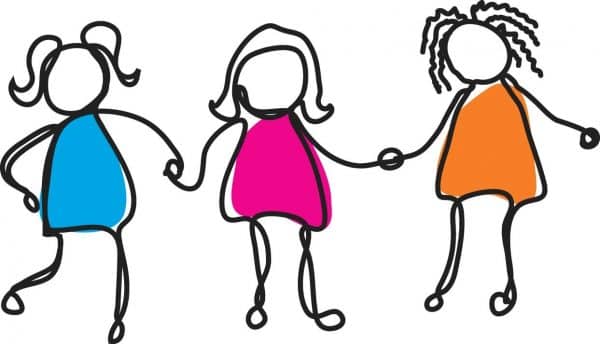
Today, 11 October 2017 is the International Day of the girl.
Six years ago, the United Nations General Assembly voted to pass a resolution adopting October 11, 2012 as the inaugural International Day of the Girl Child to raise awareness of the importance of nurturing girls globally and in developing countries in particular.
This year’s theme for the Day of the Girl is “EmPOWER Girls: Emergency response and resilience planning.”
Whilst the theme is about empowerment, we still have a lot to do to bring girls around the world onto the same level so that empowerment is standardised across the world.
Let me give you some examples.
- According to UN statistics, there are 100 million girls missing around the world. Where have they gone? Many of them are left on the sides of roads, drowned, maimed and thrown in trash bins. The reason? They were girls, not boys.
- Sex-selective abortion, also colloquially known as “gendercide,” is a huge problem. For every 200 girls born, one is refused the chance to see the light of day just because she is a female. Over the last 14 years, there were an average of 4,575 abortions every day. That comes to about one abortion motivated by gender every 18 seconds. Which means that if you make it into the world as a girl you’ve already achieved something.
- But that doesn’t mean you are safe. Global child mortality is at around 4% and studies show that infant homicide is still predominantly female. So being born and then staying alive after birth is also an achievement.
- As a girl, you have less chance of being educated than if you were a boy. Twice as many girls as boys will never start school in countries all around the world. Girls are almost two and a half more likely to be out of school if they live in conflict-affected countries, and young women are nearly 90% more likely to be out of secondary school than their counterparts in countries not affected by conflict. So being born, staying alive and getting to go to school is an achievement.
- Then there is the struggle to stay in school as you get older and battle cultural and societal pressures.
- Millions of girls are at risk of FGM
- One in four girls globally are married before they reach 18.
- Discrimination because of disability is real. The literacy rate for adults with disabilities is 3%. For women with disabilities the literacy rate is even lower, at 1%.
- Each month, when you get your period you could be shunned from society. In some countries you’re seen as untouchable and forced to sleep outside.
- As a girl, you’re at greater risk of HIV. Girls aged 10 to 14 are more likely than boys to die of Aids-related illnesses.
- Worldwide, the biggest killer of girls aged 15 to 19 is suicide.
- Teenagers are at more risk of having unsafe abortions than older women.
- Maternal death is the second biggest cause of mortality for girls aged 15 to 19.
- Even if you make it through school, grow up without being shunned for naturally occurring bodily functions, dodge early marriage and get into paid employment, the odds are you’ll earn less for doing the same job as your male colleagues.
- And then there’s life outside work. UN women estimated that 35 per cent of women worldwide have experienced either physical and/or sexual intimate partner violence or sexual violence by a non-partner at some point in their lives.
Where do we go from here?
So how exactly can we empower girls with regards to emergency planning and resilience response when we are yet to bring girls around the world on equal footing? When it’s an achievement just to stay alive, healthy and educated? When will we be able to say that girls are just as equipped as boys to achieve their potential? That the path to success and empowerment for girls is as obstacle free as for boys?
It’s a long slow road to success but it hasn’t been in vain. Studies by the UN show that when girls are given an opportunity to learn, they learn at a faster rate than boys. Governments and organisations are working together to address infanticide and child marriage. To ensure the safety and well-being of girls within and outside the home.
When more women work, economies grow. Studies show that an increase in female labour force participation results in faster economic growth. Evidence from a range of countries shows that increasing the share of household income controlled by women, changes spending in ways that benefit children.
World leaders have promised they will end it by 2030. Globally companies and organisations are working hard to bridge the pay gap and create gender friendly environments.
What you can do
But until a father provides his daughter with the same opportunities as his son, until a mother supports her daughter’s dreams of education and professional experience, until a brother fights cultural prejudice and oppressive practices to ensure his sister is safe – there is no end to the suffering of the girl child. Change begins with me. With you. With the support you give to the girls and women around you.
Girls of the world are watching. We will speak out, we will support our fellow girls and women till all of us are able to achieve more than that which is a basic human right.
Give us opportunity and watch us soar.




